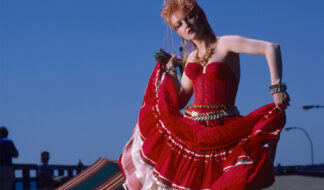London was ablaze with a Great War in 1938, but it wasn't the one involving a nasty little man with a mustache and his goose-stepping minions. Rather, it was the Great London Ballet Wars – fought between the Ballet Russe de Monte Carlo and the Original Ballet Russe – and it's a multi-decade battle that is beautifully chronicled in the documentary "Ballets Russes" that hits the screen this weekend at the Detroit Film Theatre.
That's high praise indeed, coming from someone who has spent much of the last 30 years doing his best to avoid everything related to ballet!
What makes "Ballets Russes" such a fascinating project is its focus. Rather than simply telling the history of the dance form in the twentieth century, filmmakers Dayna Goldfine and Dan Geller chronicle the artists who reinvigorated it – many of whom were still alive at the time the movie was shot in 2000. The result is a candid portrait of the people who not only lived and breathed history, but created it, as well.
Tracing its roots to the courts of Renaissance Italy, ballet in the early years of the twentieth century was in a sad state, barely kept alive by the Russians and the French. However, in 1909 Russian nobleman Sergei Diaghilev organized a group of dancers under choreographer Michel Fokine to create work that showcased the talents of Vaslav Nijinsky, an up-and-coming star in the Imperial Russian Ballet. Called Ballet Russes, Diaghilev's company took the world by storm, creating innovative works that featured modern music, intricate scenic designs and erotic themes – and hot male dancers. (Diaghilev, it seems, was attracted to handsome and talented young men, including Nijinsky. Together they were known as "the most famous couple of Europe" until the dancer married his wife, Romola, in 1913. Another was Leonide Massine who became one the century's most important choreographers.)
The company dissolved upon Diaghilev's death in 1929. However, two years later a new company was formed by Russian Colonel Wassily de Basil, utilizing many of the original company's dancers, choreographers and repertoire. It also developed new stars of its own, including "baby ballerinas" Irina Baronova, Tamara Toumanova and Tatiana Riabouchinska.
The company fractured in 1937, with Massine and Russian banker Serge Denham forming the Ballet Russe de Monte Carlo; de Basil adopted the name Original Ballet Russe. Both premiered in London in 1938 – signaling a war that didn't truly end until 1962 when Denham's financial backers finally called it quits.
All told, filmmakers Goldfine and Geller interviewed 40 of the dancers involved with the companies, including "babies" Riabouchinska and Baranova, and the last surviving member of Diaghilev's company at the time of her death in 2004, Dame Alicia Markova. They also obtained hours of archival footage and personal films that reach as far back as the 1932 debut of de Basil's company.
Most impressive, however, are the artists themselves. Now primarily in their 70s and 80s, most have remained in the business, passing down their skills to later generations. If, as the movie posits, "It is the nature of dance to exist for only a moment," then it is these dancers who will be remembered forever. They are an inspiration to us all!
Topics:
Entertainment









